
If you are interested in Japanese otaku culture you have probably heard about Akhihabara or Akiba for short. Akiba is a neighbourhood of Tokyo famous for electronics shops, game shops, maid cafés and arcades. I was lucky to get a tour of Akiba by Michiya Kawajiri and Kiyonori Nagasaki on November 30th, 2011. Akiba is similar to Osaka’s Nipponbashi neighbourhood, but larger and with maid cafés. You can see my photos of Akihabara on Flickr.
My guide Michiya Kawajiri is an Associate Professor in the Liberal Arts Education Center (Japanese) of Tokai University. He specializes in Hindu philosophy but also lectures on Japanese popular culture and is an audiophile who often goes to Akiba for vacuum tubes for his custom built stereo system. Kiyonori Nagasaki is a Senior fellow / General manager for the International Institute for Digital Humanities and is also associated with the Interfaculty Initiative in Information Studies of the University of Tokyo. We went to Akiba with John Unsworth who was in town to give a couple of presentations at the University of Tokyo including one at the symposium I wrote a conference report on.
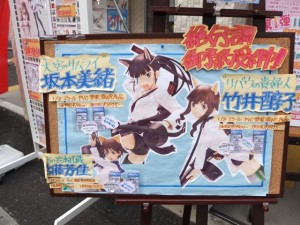
Our first stop was the third floor of the Volks Akihabara Showroom. Volks specializes in customizable dolls. We saw two lines of dolls, the Dolfie Dream line which is aimed at men and the Super Dolfie line that is aimed more at women. When I say that the dolls are customizable I mean that you can get different bodies, different hands, eyes, heads, wigs, and lots of costumes and accessories including guns. These dolls are also designed to be painted with custom makeup and there was an area where you could sit with an expert and get makeup advice for your doll. For that matter there are workbooks that you can buy with techniques for making up your doll. The Dolfie Dream series seem designed for men to be able to create their fantasy babes, though they may also give men a venue to indulge in doll play that allows them to escape the limits of sanctioned masculinity. See Galbraith on Moe. To see some of these dolls, see Volks USA. Alas I couldn’t take pictures in the store, but the US web site has plenty of examples.
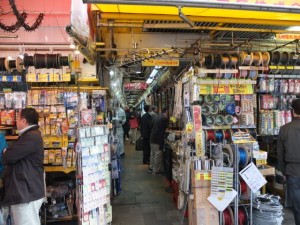
The next stop was a warren of small shops that sell electronics, security equipment, and other things. This complex of shops also sells things on consignment and is probably closer to the old Akihabara that developed around radios after the war. One shop had small model dioramas of rooms and shops for sale. Others had miniaturized video cameras for security and spying on others. There were shops with vacuum tubes and stuff for DIY stereos.
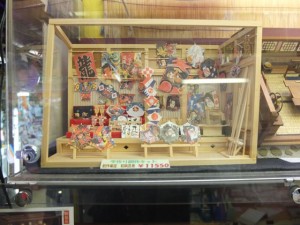

Next up was a fascinating store that sold doujinshi games and music (along with stickers and other paraphenalia.) The shop, which was down in a basement, had crowded racks of music CDs from the recent M3 (Music + Media-mix Market) (Japanese) and racks of stickers. Of greater interest to me were the doujinshi games though it was hard for me to tell what was a game and what was something else. An example were games related to the Touhou Project, itself a doujinshi game project. The original Touhou (or Toho) games are the work of the Team Shanghai Alice which is essentially a circle of one, a game designers called Zun. He creates danmaku shooting games which are difficult games with rich patterns of projectiles you have to avoid (or just admire.) These games include many young female characters which other fans have then taken up and used in their doujin works. I picked up a booklet with reviews of Touhou Project games.
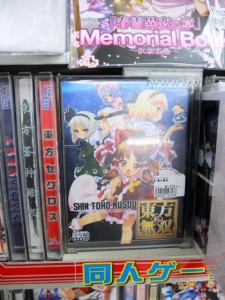
We then visited the Schatz Kiste (Japanese) “Akihabara Culture Café” – a relaxed Maid Café. This was more of a rustic or cultural maid café than the tacky ones you hear about. There was little of the silly service in evidence and our maid was a librarian by profession. They had a manga about their maids that I regret not getting and lots of books, games, and small toys at hand. For a detailed discussion of the Maid Café phenomenon see Galbraith’s Maid in Japan.

After Schatz Kiste we split up and Michiya Kawajiri continued on to the Tokyo Anime Center in a flashy new building. This Center was disappointingly small and commercial. It seemed mostly a small space to promote anime. That day there was an exhibit on Tiger & Bunny, a show where the main characters are all sponsored by companies like SoftBank and wear their logos on their suits like professional soccer players. They have some sort of studio in the complex, but it wasn’t in operation.
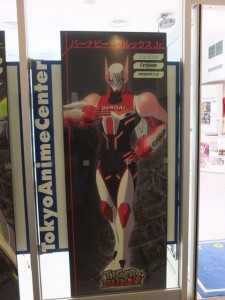
Over lunch Kawajiri and I talked a bit about game studies and what questions interested him. He talked about the importance of Osamu Tezuka who almost single-handedly created the post-war Japanese manga and anime industry. Inspired by Disney Tezuka was pioneering in his adaptation of the comic genre to Japanese themes, prolific in his output, and inspired generations of artists. When I asked him what questions he thought were important he talked about the difference and space between kawaii (or cuteness) and moe (passion felt for cute characters.) He tried to explain moe to me, and that led to talking about Azuma’s book Otaku, Japan’s Database Animals. In his view Azuma got the database part right (ie. that fans remix characters and themes from popular franchises as if they were items in a database), but did not get the animal part right (ie. that there was no reflection and otaku consumption was animalistic.)
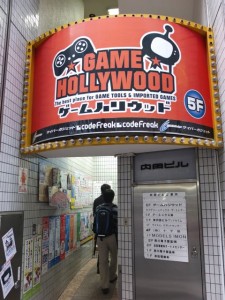
On the way home we visited an arcade and then a shop specializing in imported games and game hacking tools called Game Hollywood. This shop was up on the fifth floor of a narrow building which is not unusual in Japan. In the same building there were some shops that specialize in model train kits. These specialized hobby stores on upper floors are what is unique about Akihabara – the large arcades can be found elsewhere.
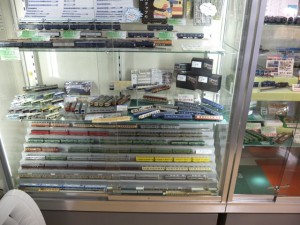
Akihabara is a palimpsest of a place where previous phases get pushed aside, but never totally erased. As writers like William Gibson familiarized us with postmodern Japan and Akihabara tourists (like myself) began to visit Akiba to see the future of Modern boys and mobile girls the large stores moved in. With tourists the big chains began to buy up and build so that now Akiba is more about game centers and large stores. Nonetheless, in the back streets and up closet-sized elevators earlier Akibas still survive. There are still the small electronics shops and hobby shops of previous eras. Akiba has become an icon, but it needs these stores for authenticity and memory. These stores thrive on being small and discoverable – that is the fun of poking around – discovering the small shops with their specialized goods. The big stores feed of the little ones that bring in the visitors looking for authenticity. Kawajiri commented that “we sometimes call Akihabara ‘seichi’, or holy land.” He hopes his old
Akihabara survives through the new eras as an asylum for otaku.
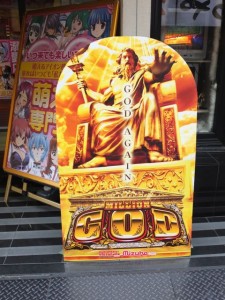
Some useful links:
- Japan National Tourism Organization site on Akihabara – Tokyo’s hobby heaven – http://www.jnto.go.jp/eng/indepth/cultural/kie/akihabara/index.html. This has a page about the history of Akiba, http://www.jnto.go.jp/eng/indepth/cultural/kie/akihabara/kie_akihabara_06.html.
- Akihabara News is not only about Akiba, but has stories about Japanese electronics and high-tech – http://en.akihabaranews.com/
- Wikitravel has a page on Akihabara – http://wikitravel.org/en/Tokyo/Akihabara
- A good academic discussion of Akiba and otaku is Galbraith, Patrick W. “Akihabara: Conditioning a Public “Otaku” Image.” Mechademia 5 (2010): 210-30. Print.
- Galbraith also has a good article on the Maid Cafe phenomenon at, http://intersections.anu.edu.au/issue25/galbraith.htm.